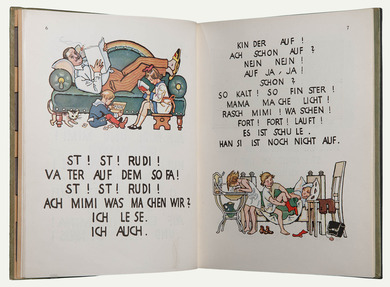Learning to read
The origins of the first written characters can be found in images. Pictures, signs and symbols can help to communicate textual content to those with both developed reading skills and those with no acquired literacy, in some cases acting as a replacement medium for the learner. Long before they learn to read for meaning, children are capable of understanding situations, images and pictograms. Visual depictions are related to written text in a wide variety of ways: they stimulate the desire to read while also supplementing, elucidating, supporting, grounding and simplifying reading, in addition to providing entertainment.
The act of reading occurs in the brain, activating a range of cognitive activity. A person reading at a modest speed can process around 300 words (or 1,500 characters) per minute. Reading is a learning process involving the comprehension of individual letters and words in addition to a broader conception of meaning. Methods of teaching the art of reading have changed fundamentally since the 18th century. The modern conventional approach is to learn reading in parallel to writing skills. While western culture once turned extensively to religious material to teach reading skills, the 20th century in particular saw the introduction of wall charts, ABC books and primers - educational media that have been adapted over decades to the modern needs of children.

